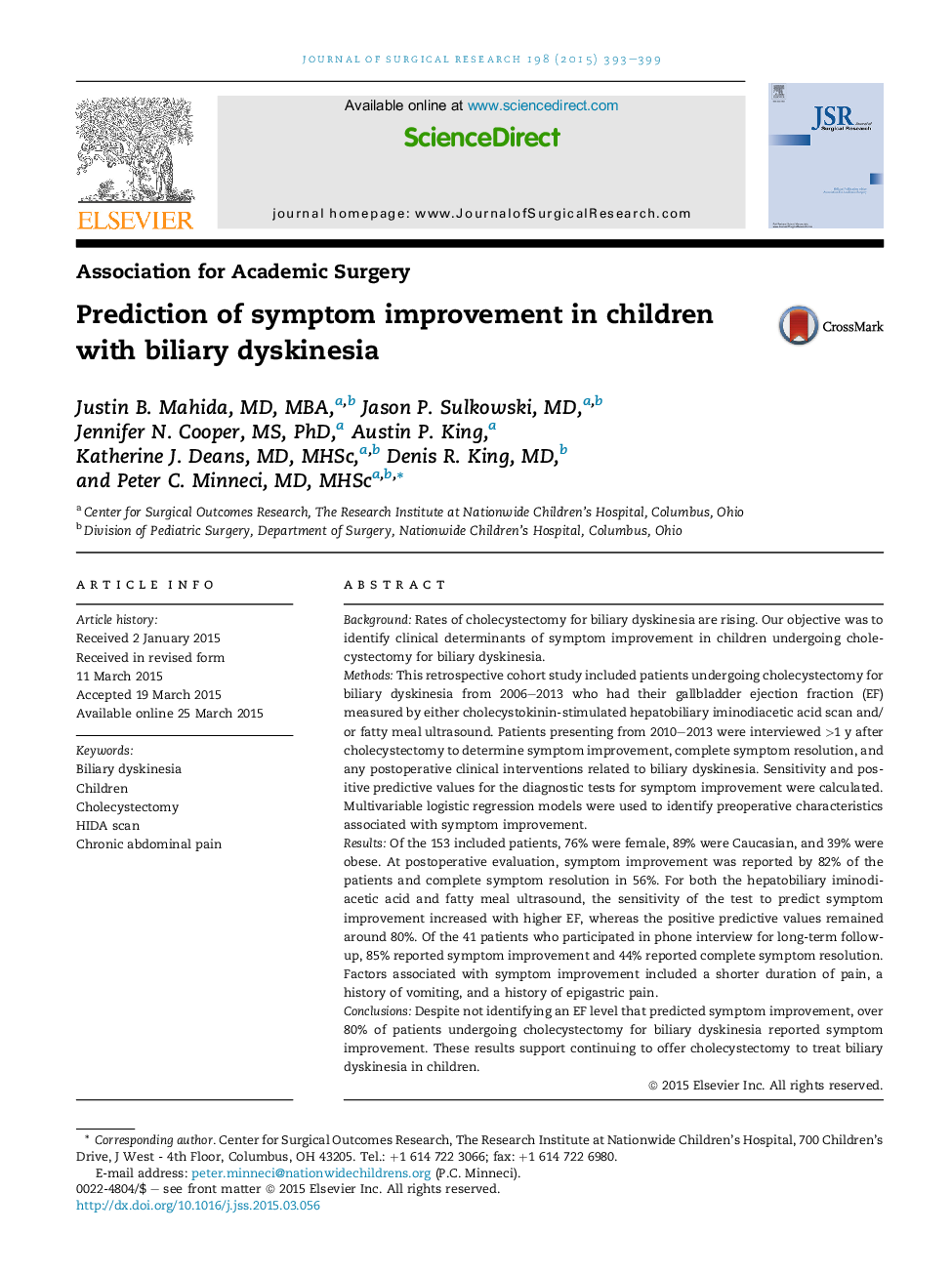| Article ID | Journal | Published Year | Pages | File Type |
|---|---|---|---|---|
| 4299721 | Journal of Surgical Research | 2015 | 7 Pages |
BackgroundRates of cholecystectomy for biliary dyskinesia are rising. Our objective was to identify clinical determinants of symptom improvement in children undergoing cholecystectomy for biliary dyskinesia.MethodsThis retrospective cohort study included patients undergoing cholecystectomy for biliary dyskinesia from 2006–2013 who had their gallbladder ejection fraction (EF) measured by either cholecystokinin-stimulated hepatobiliary iminodiacetic acid scan and/or fatty meal ultrasound. Patients presenting from 2010–2013 were interviewed >1 y after cholecystectomy to determine symptom improvement, complete symptom resolution, and any postoperative clinical interventions related to biliary dyskinesia. Sensitivity and positive predictive values for the diagnostic tests for symptom improvement were calculated. Multivariable logistic regression models were used to identify preoperative characteristics associated with symptom improvement.ResultsOf the 153 included patients, 76% were female, 89% were Caucasian, and 39% were obese. At postoperative evaluation, symptom improvement was reported by 82% of the patients and complete symptom resolution in 56%. For both the hepatobiliary iminodiacetic acid and fatty meal ultrasound, the sensitivity of the test to predict symptom improvement increased with higher EF, whereas the positive predictive values remained around 80%. Of the 41 patients who participated in phone interview for long-term follow-up, 85% reported symptom improvement and 44% reported complete symptom resolution. Factors associated with symptom improvement included a shorter duration of pain, a history of vomiting, and a history of epigastric pain.ConclusionsDespite not identifying an EF level that predicted symptom improvement, over 80% of patients undergoing cholecystectomy for biliary dyskinesia reported symptom improvement. These results support continuing to offer cholecystectomy to treat biliary dyskinesia in children.
